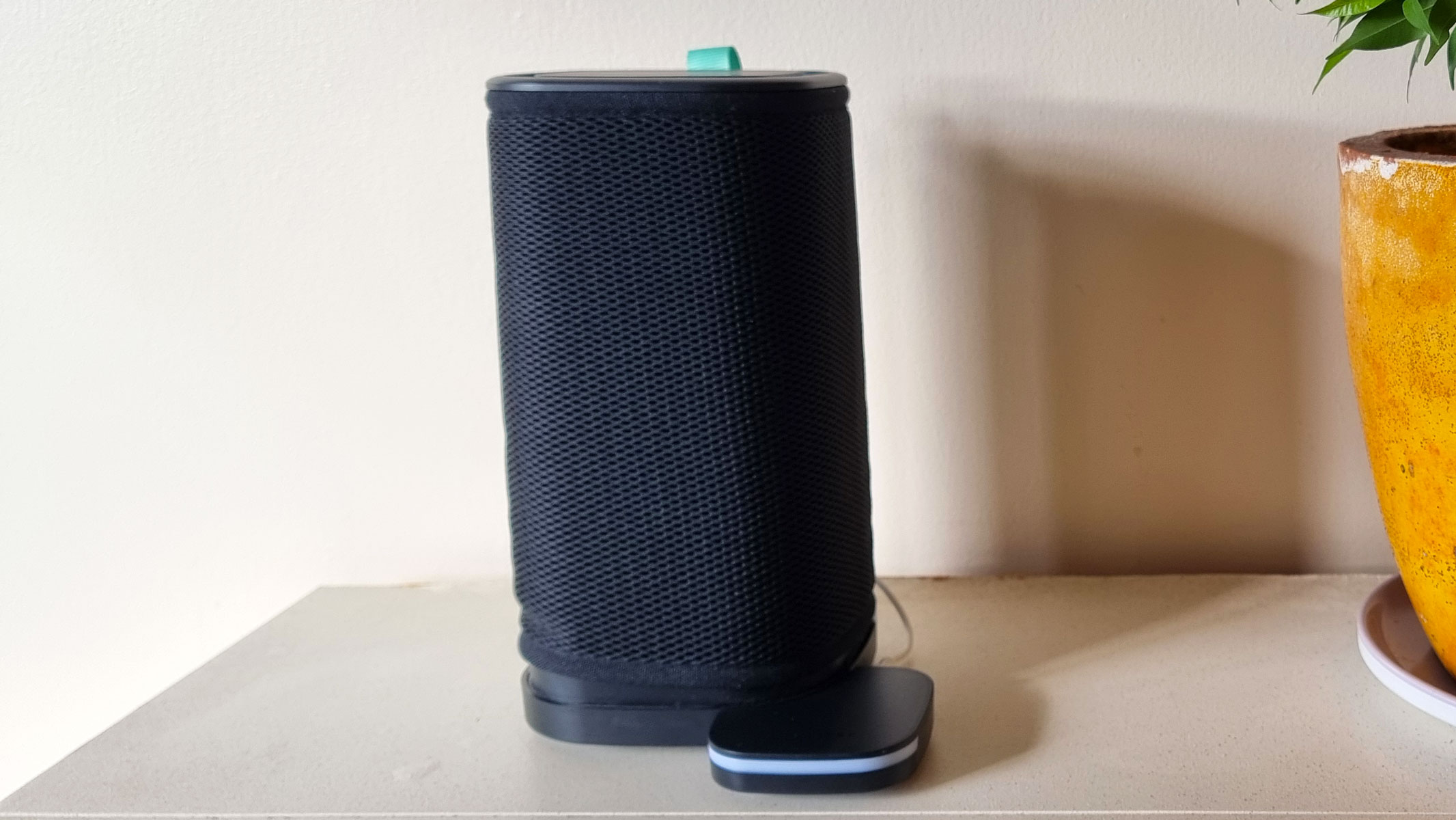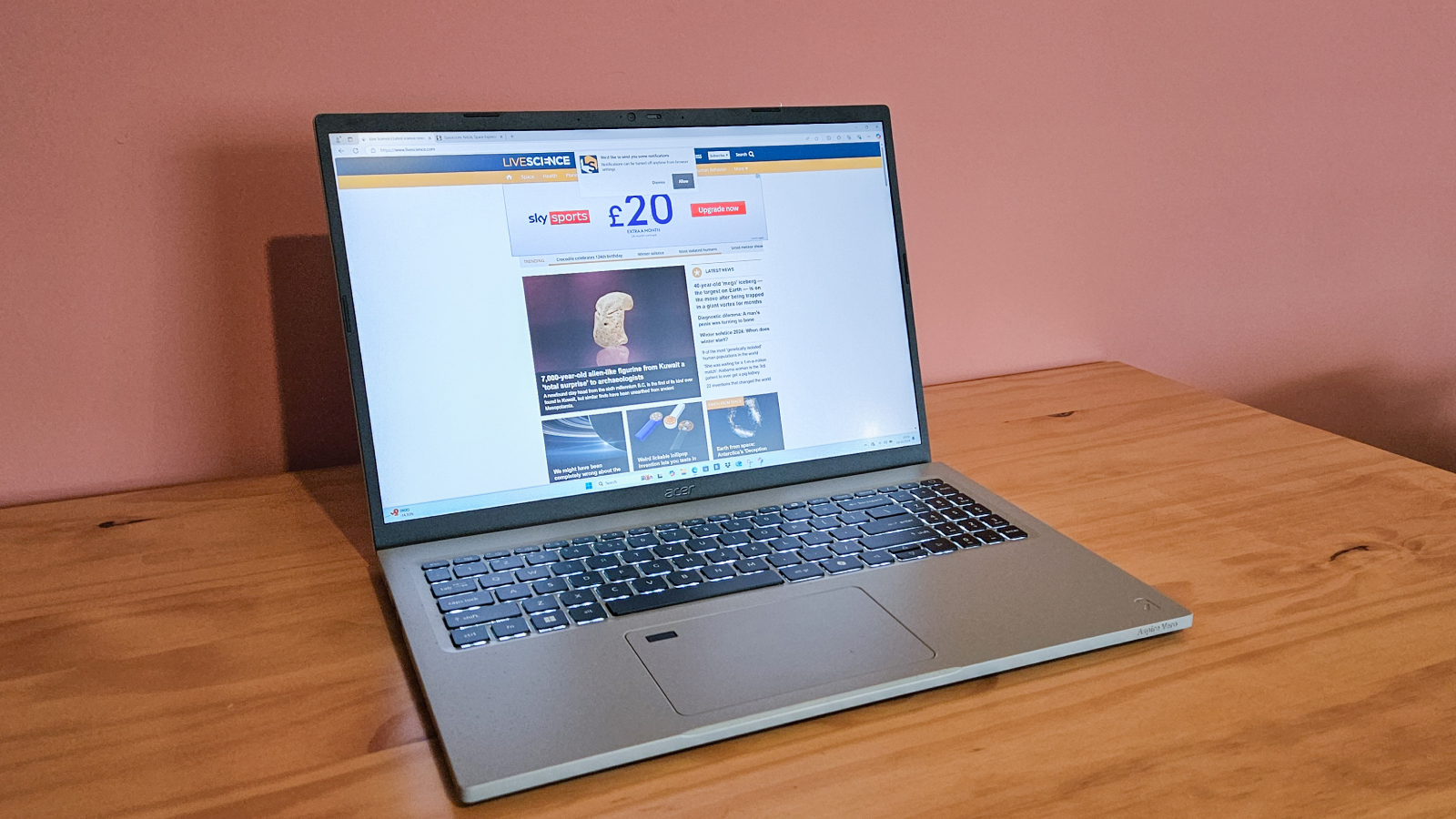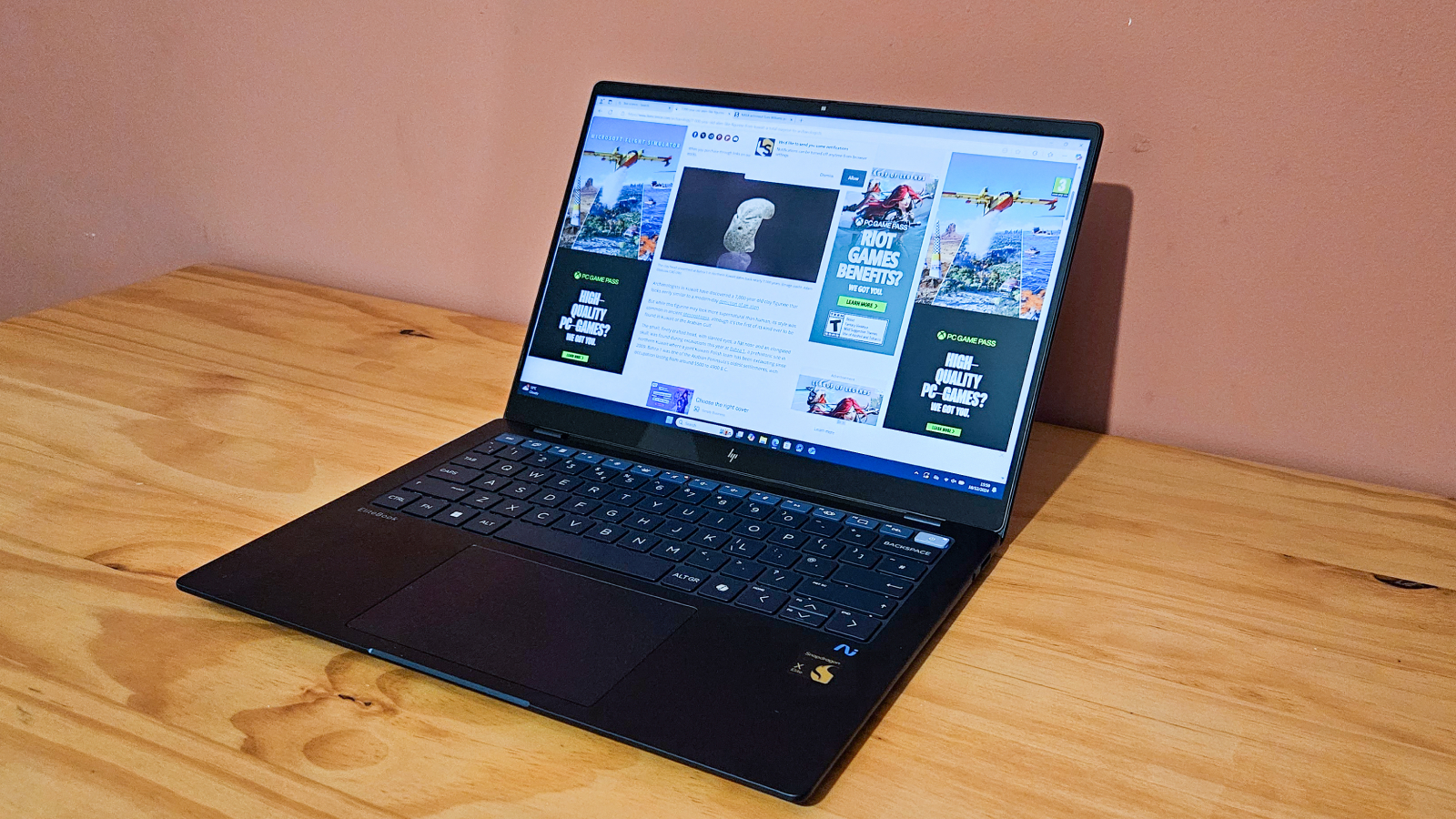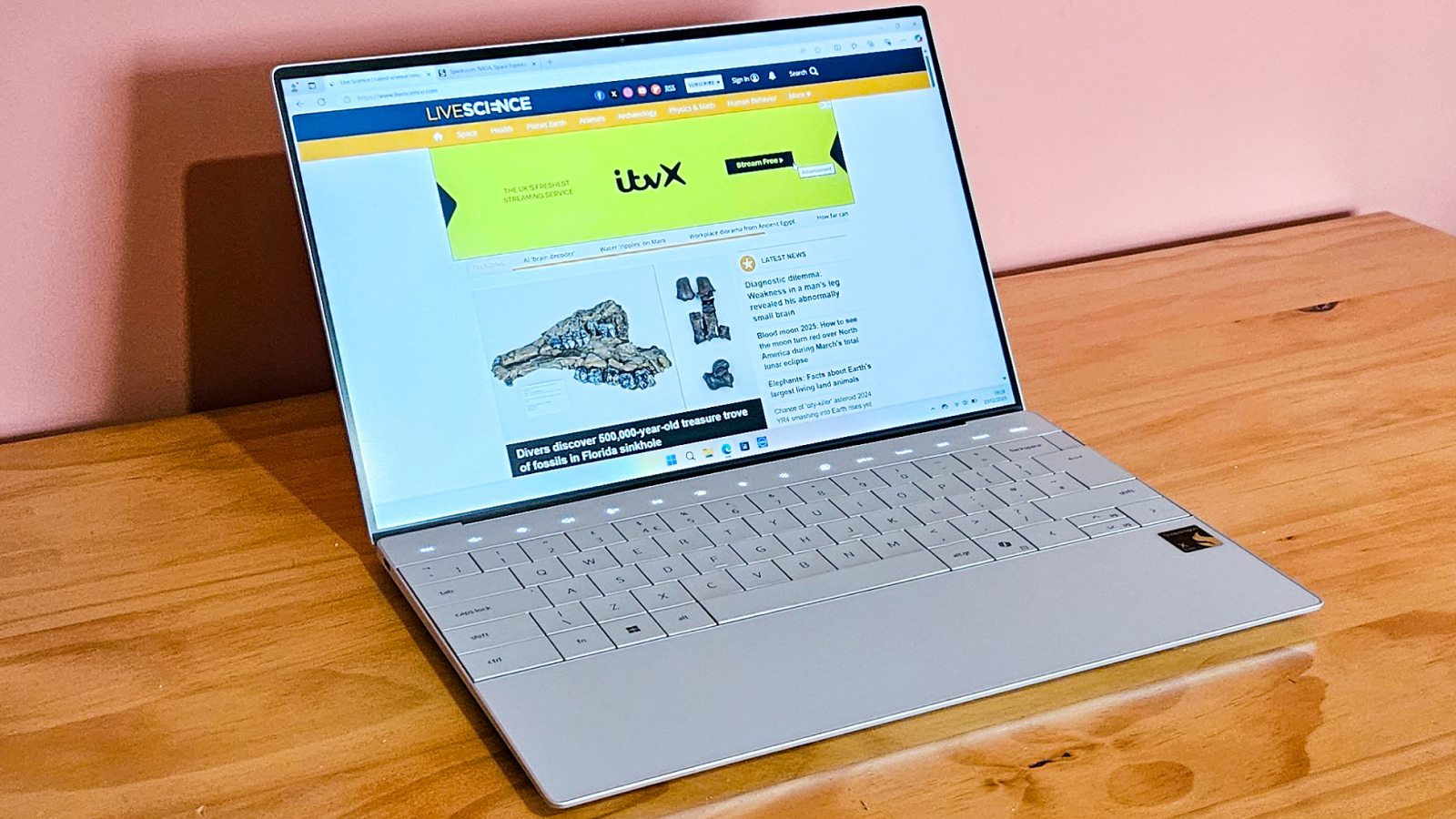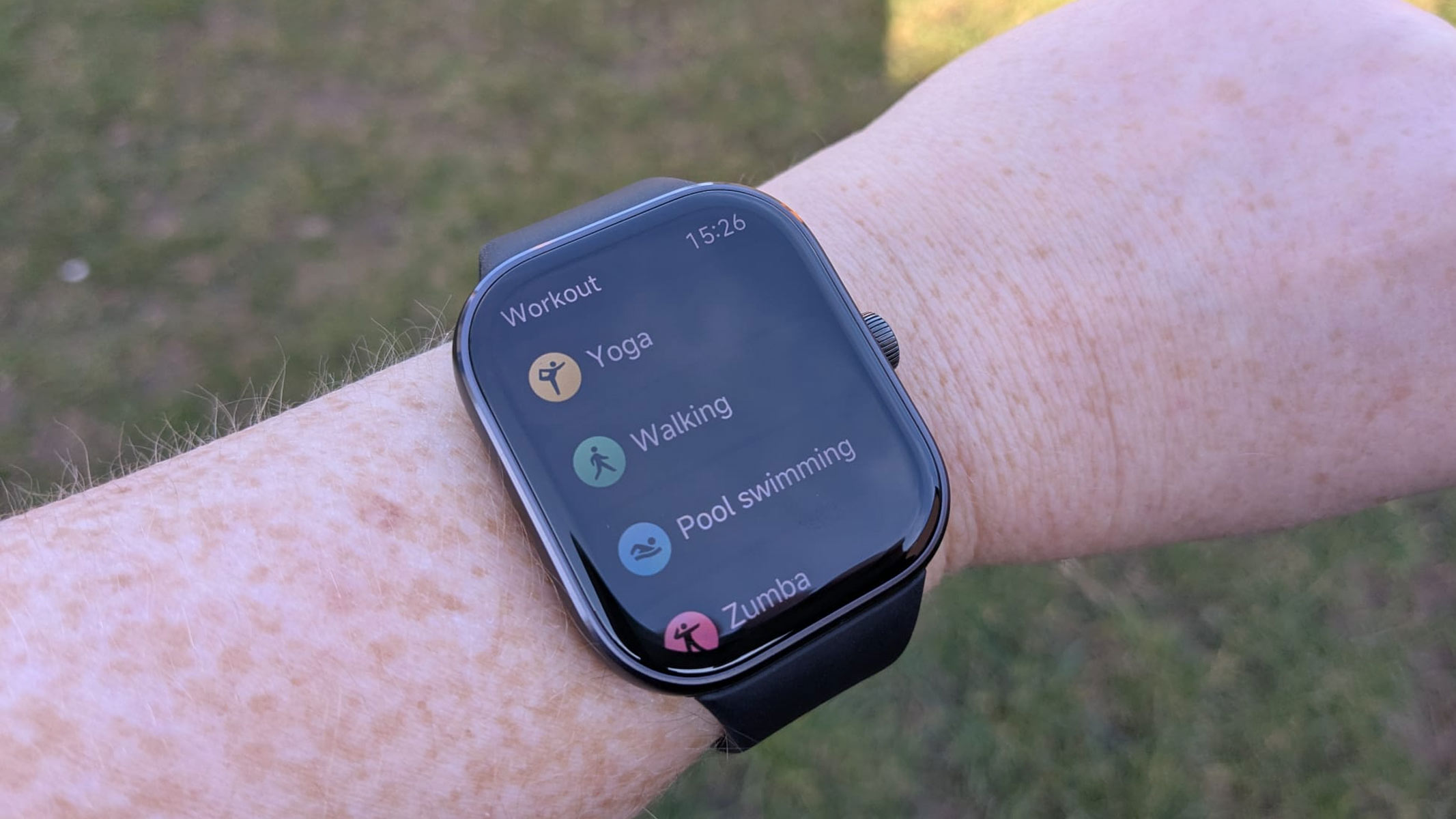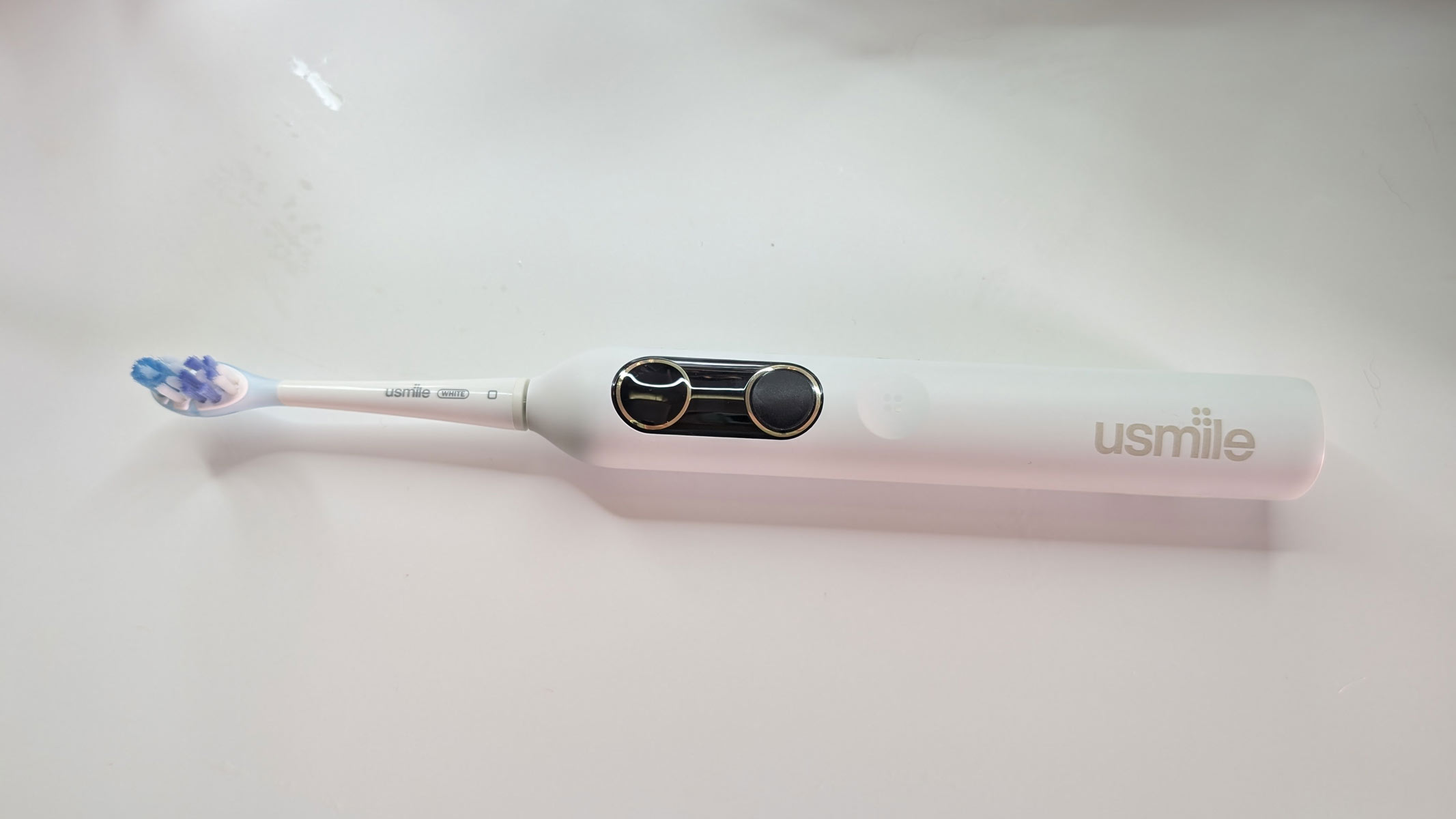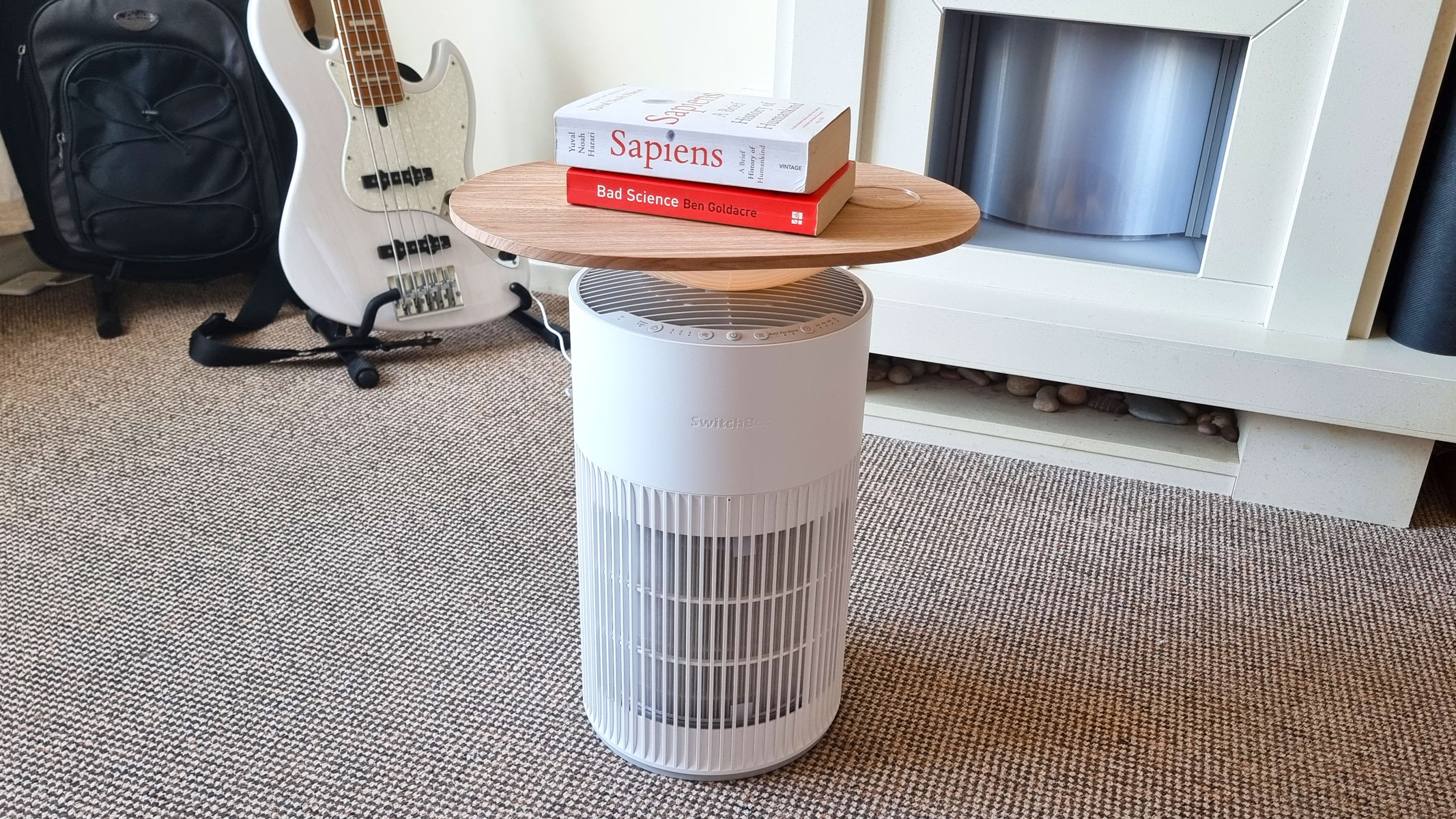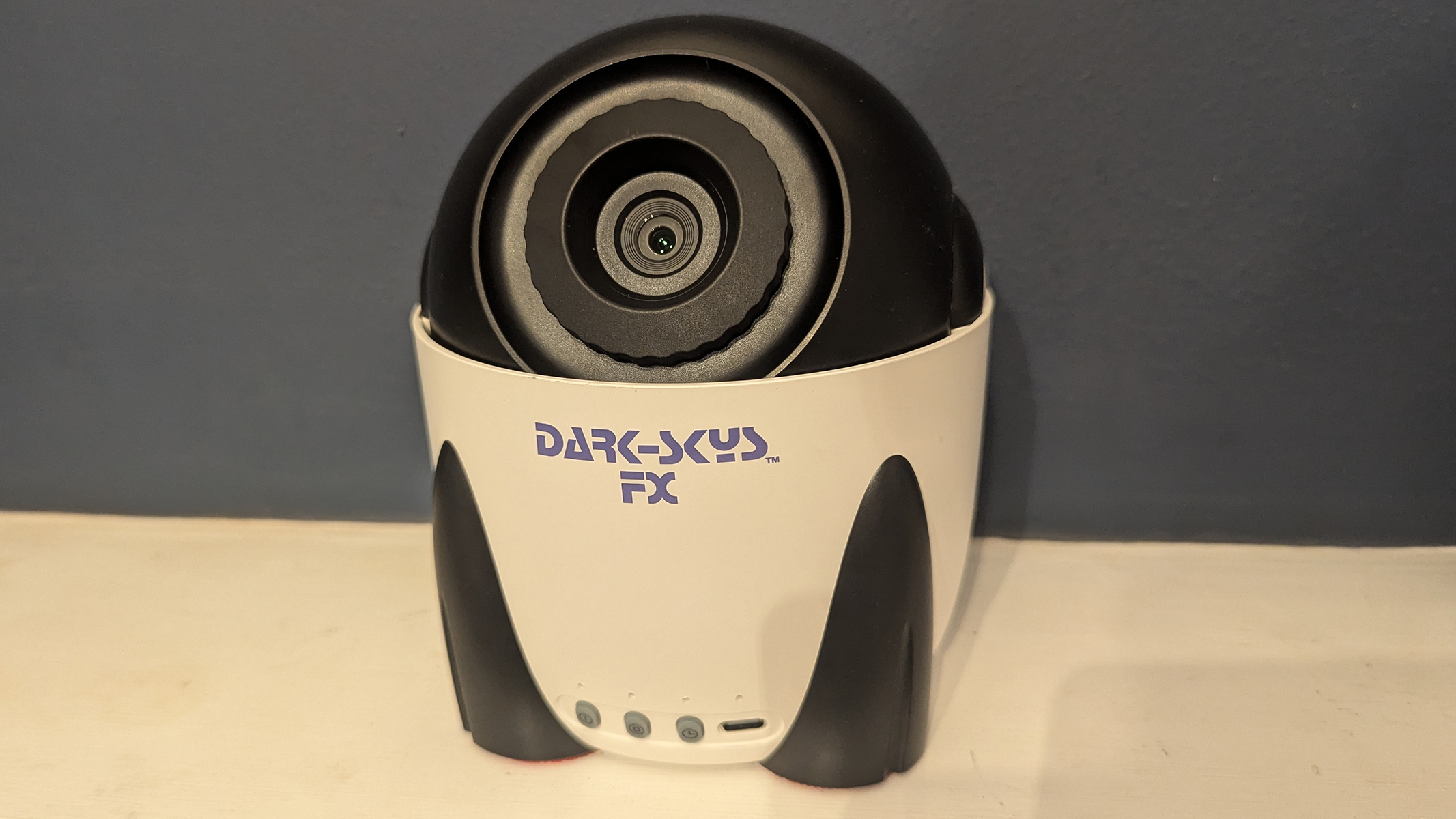Live Science Verdict
The Acer Swift Go 14 AI is an entry-level AI PC that lacks the looks and charms of its counterparts — but it won't let you down on battery life.
Pros
- +
Excellent battery
- +
Great value
- +
Relatively light
Cons
- -
Runs noisy
- -
Bulky and unsightly
- -
Middling performance
Why you can trust Live Science
CPU: Qualcomm Snapdragon X Plus (8 cores)
RAM: 16 GB LPDDR5X
GPU: Qualcomm Adreno GPU
Storage: 512 GB SSD
Display: 14.5-inch IPS
Weight: 2.91 lbs (1.32 kg)
Dimensions (in): 12.7 x 8.9 x 0.65
Dimensions (cm): 322.6 x 226.0 x 16.6
The Acer Swift Go 14 is a more stripped-back version of the manufacturer's flagship Acer Swift AI model, although at first glance there is little separating the two machines. They are both made from a basic aluminum chassis and adopt similar physical quirks, like the notch to house the webcam and a keyboard fitted into an angular groove on the chassis. The look of this machine isn't anything to write home about, but aesthetic impressions — especially at this price point — don't speak to how much you can get out of a laptop.
With middle-tier Qualcomm Snapdragon hardware, we'll be judging whether the Acer Swift Go 14 AI can perform well enough to consider, when you can also grab a MacBook for around the same price.
Acer has also made a big deal of the AI features in this machine, and has even stamped some custom branding onto the touchpad that lights up when you're tapping into the power of its NPU — but are they really worth the effort the laptop maker has gone into (literally) highlighting this?
Acer Swift Go 14 review
Acer Swift Go 14 AI: Design (250)
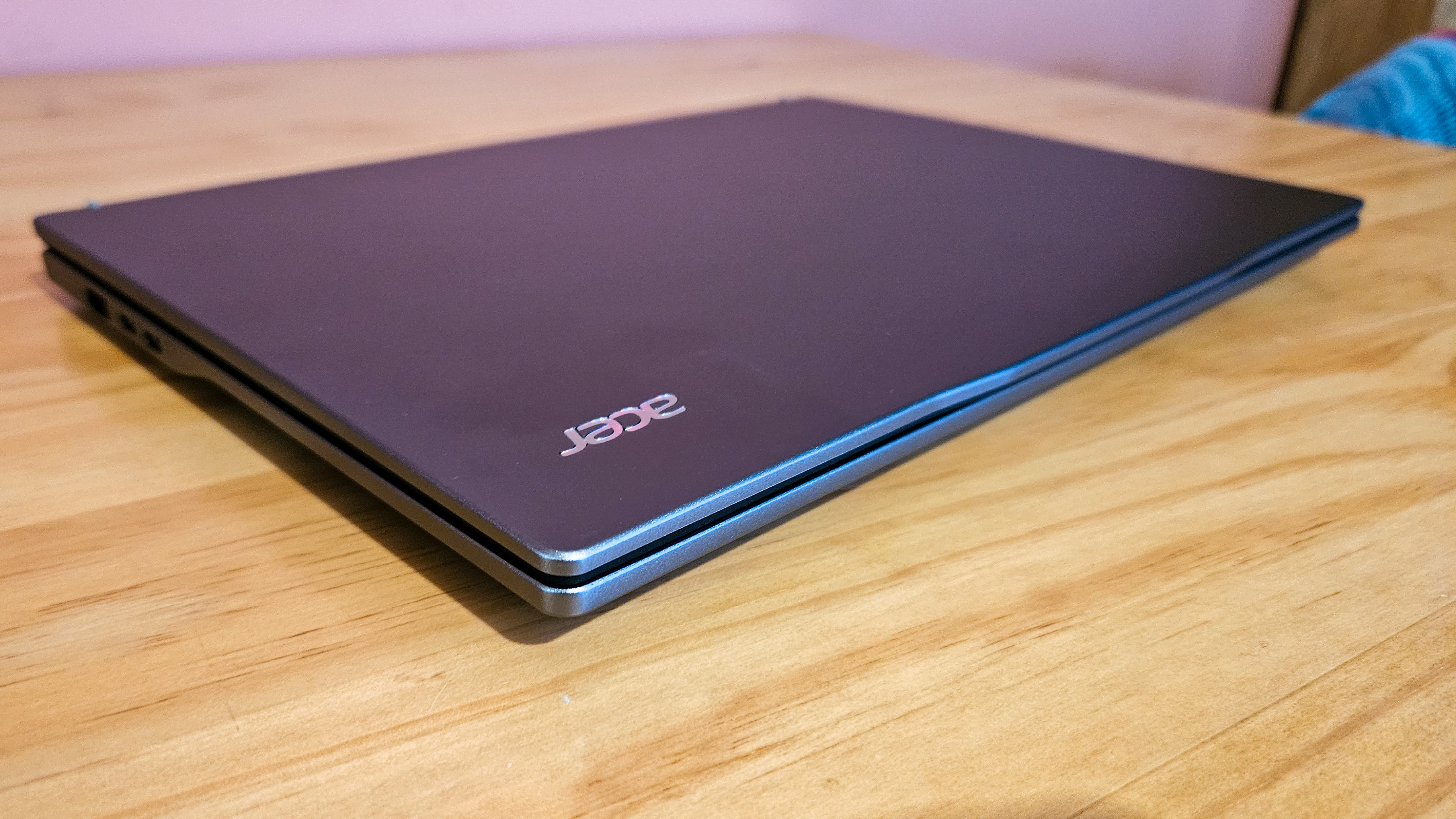
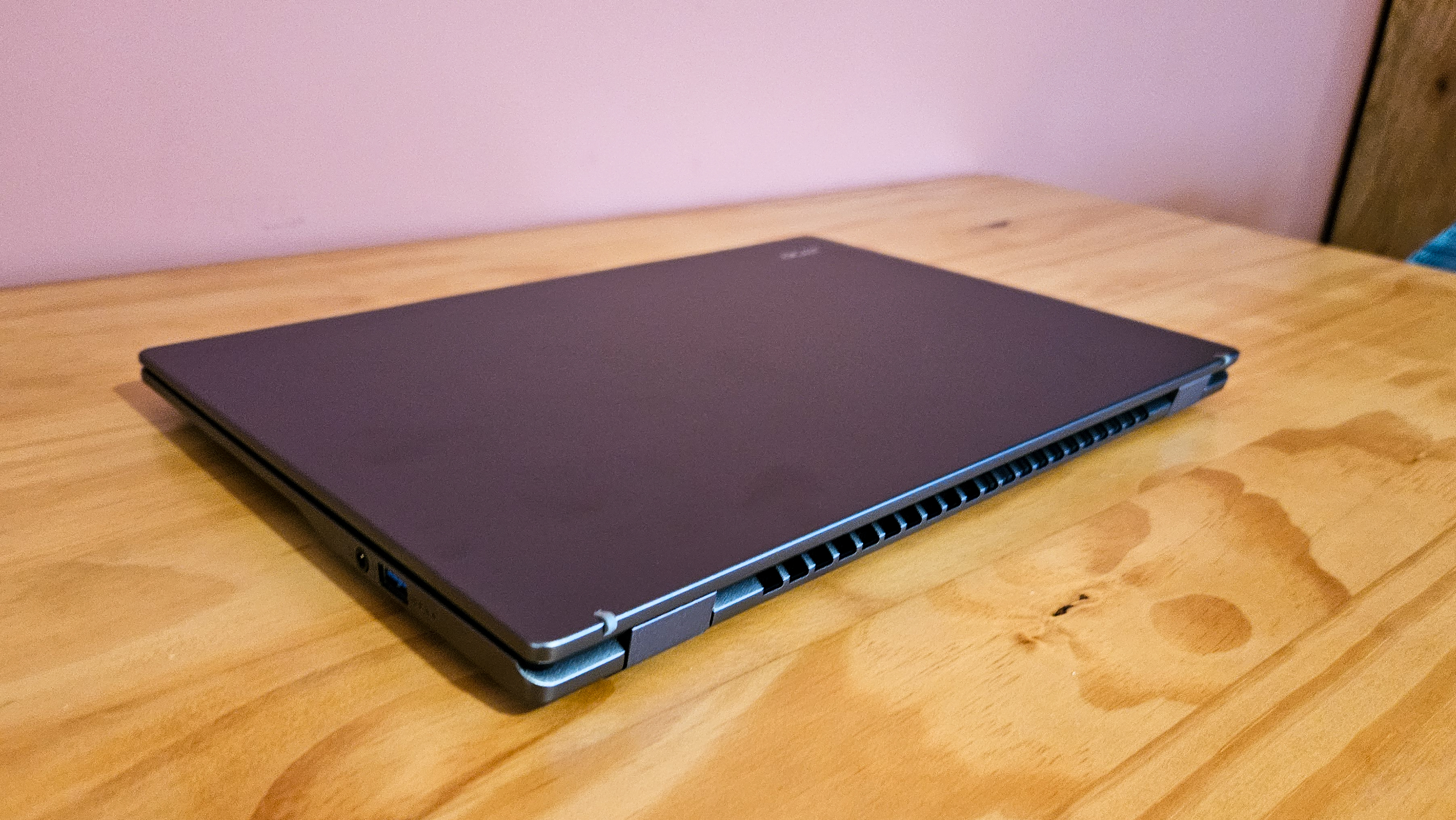
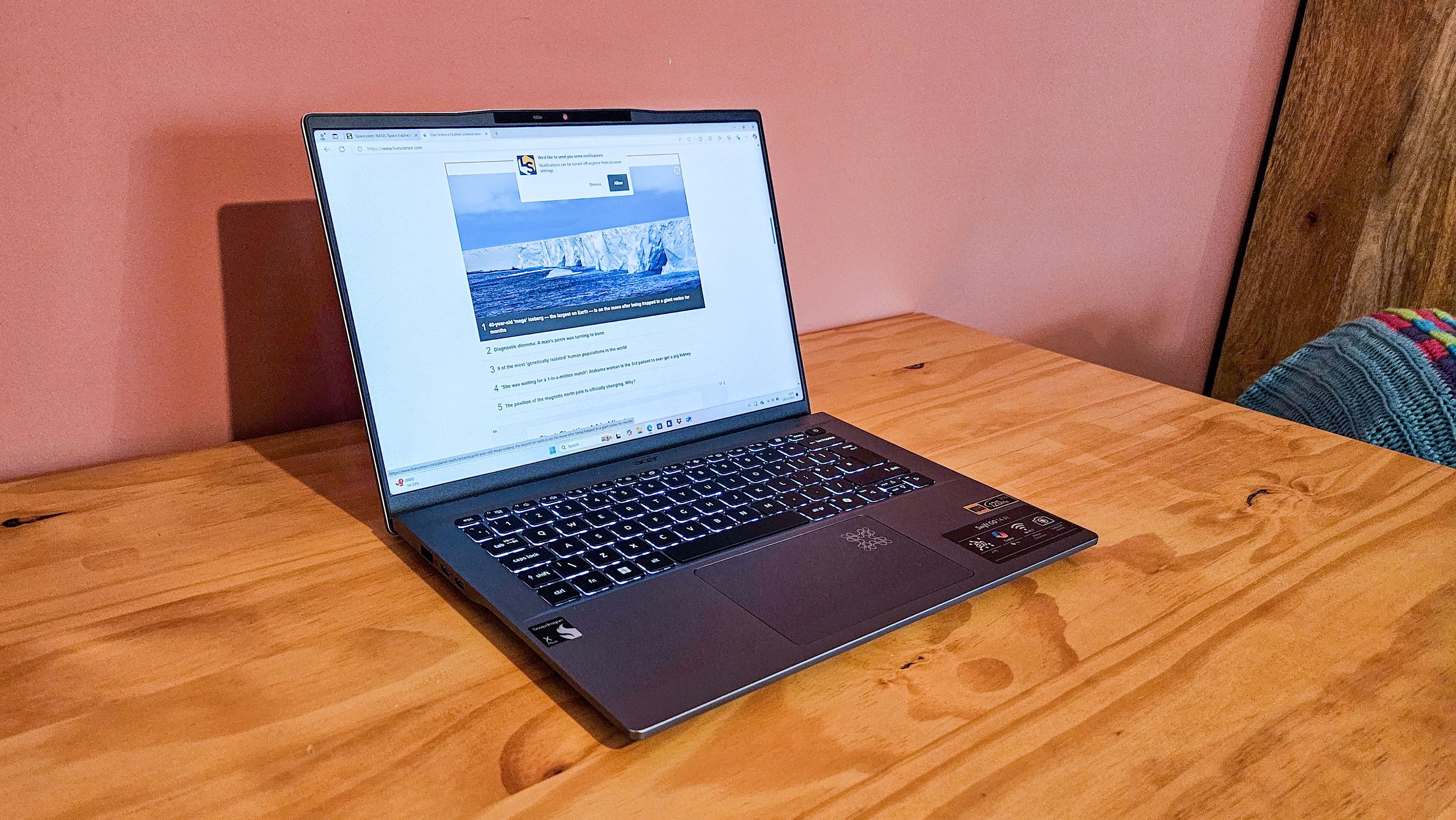
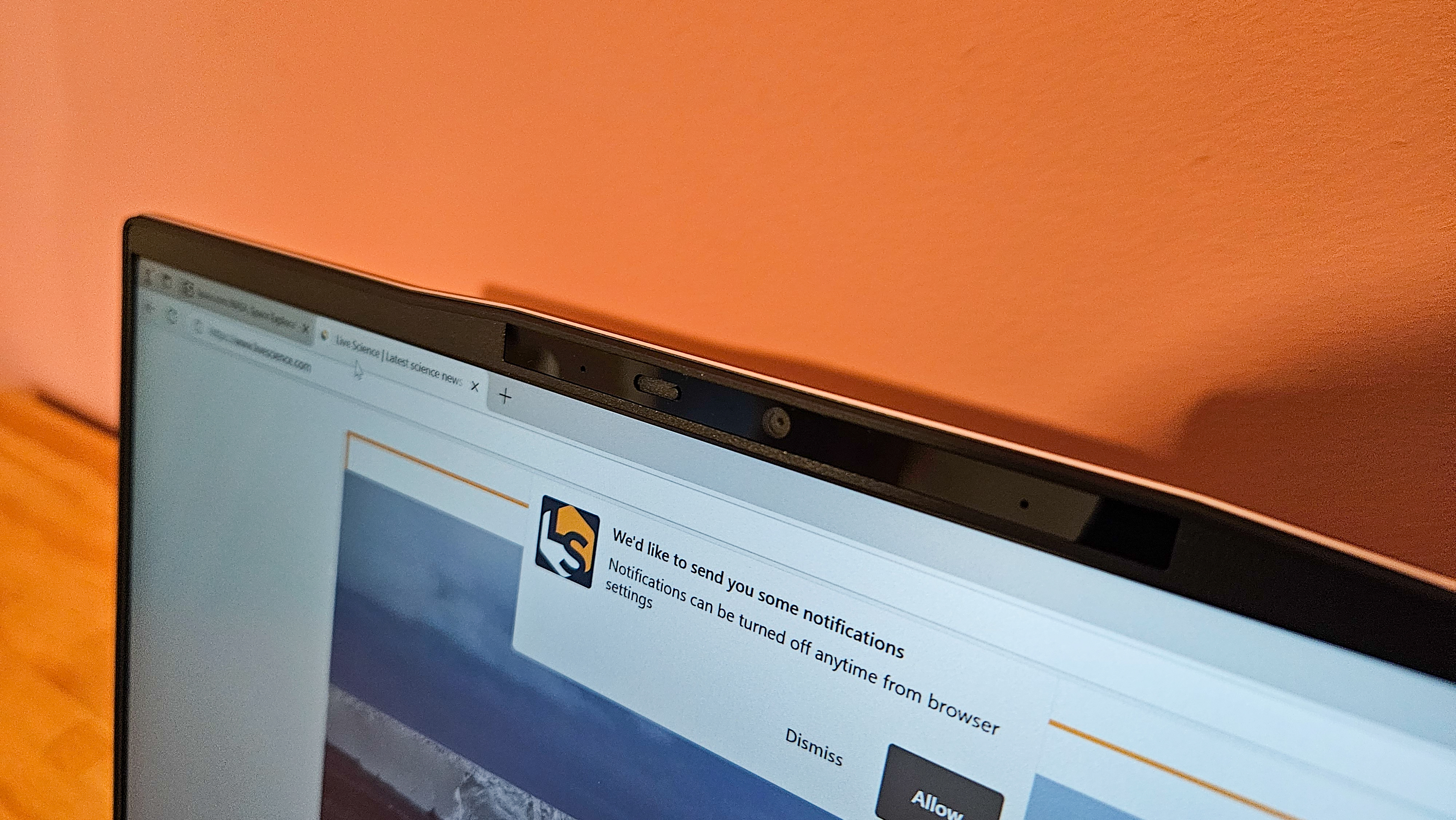
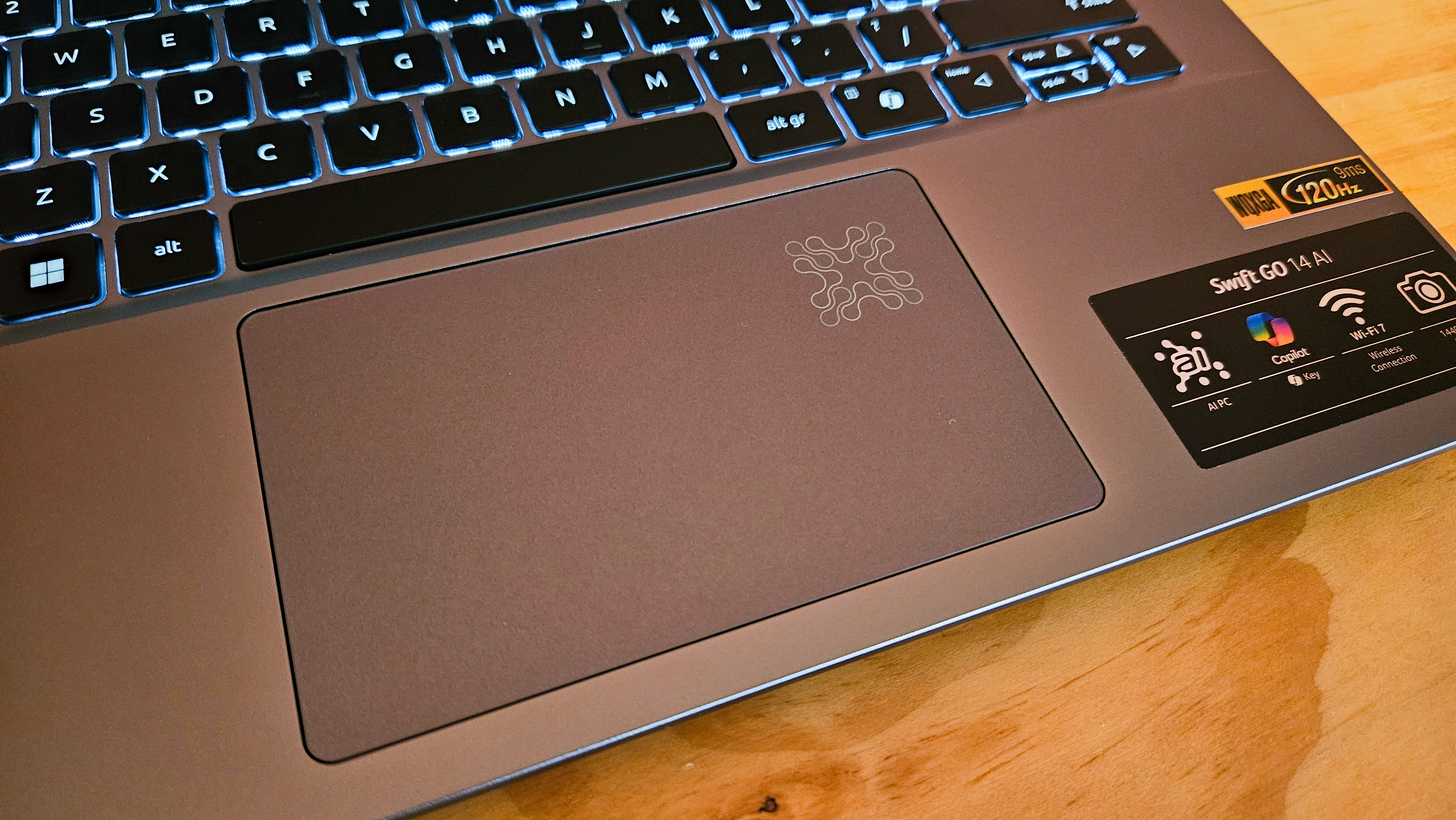
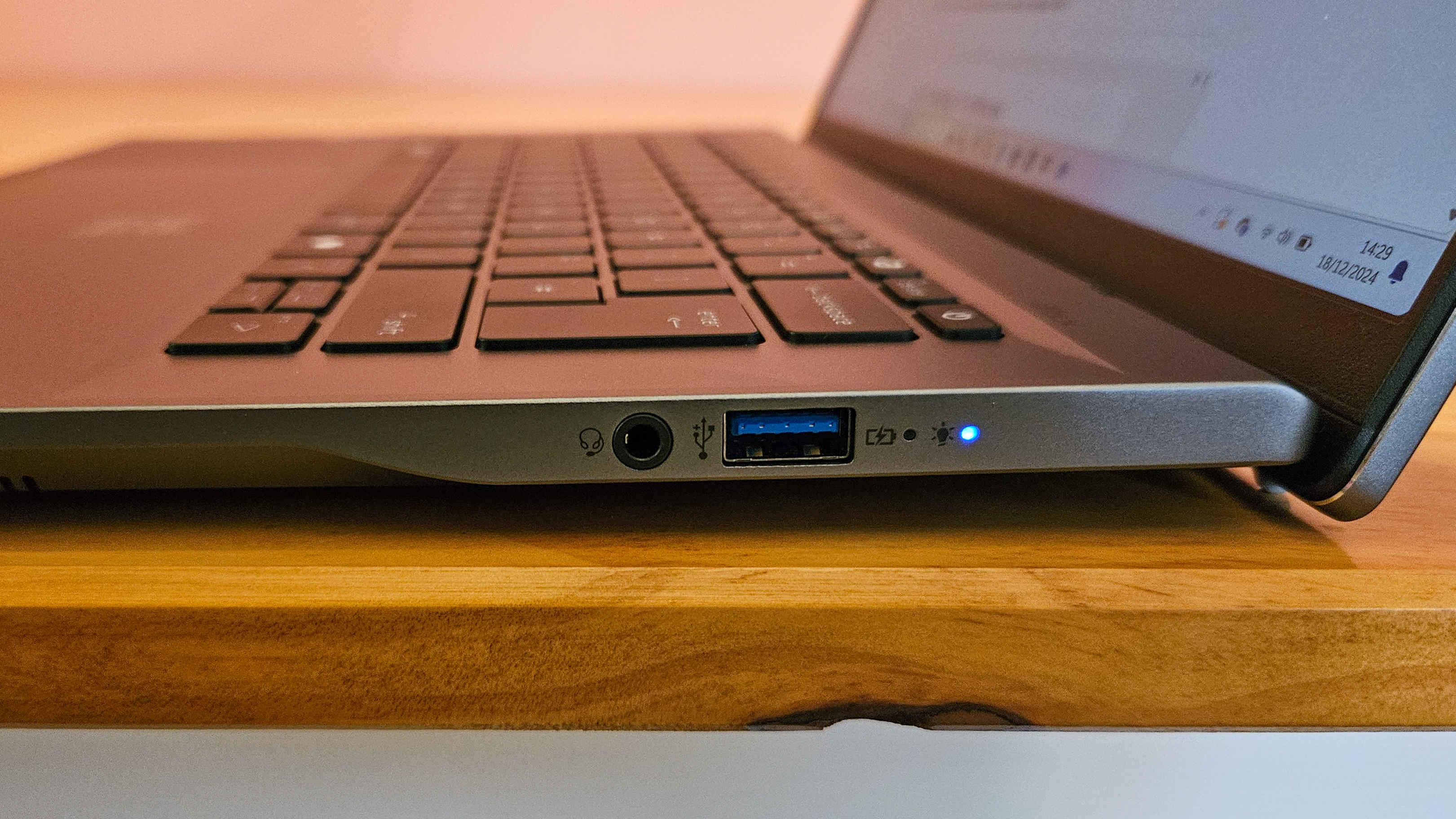
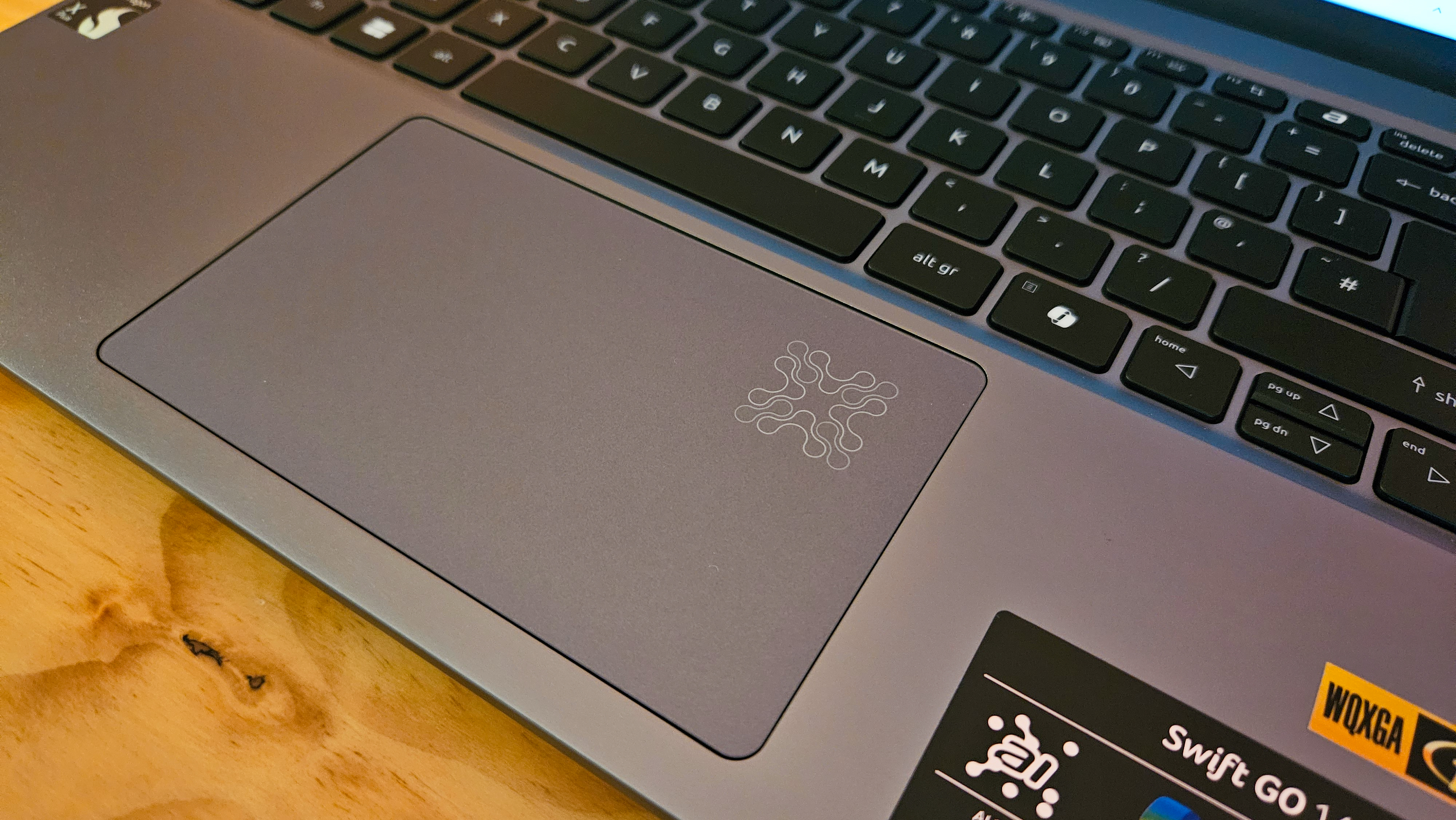
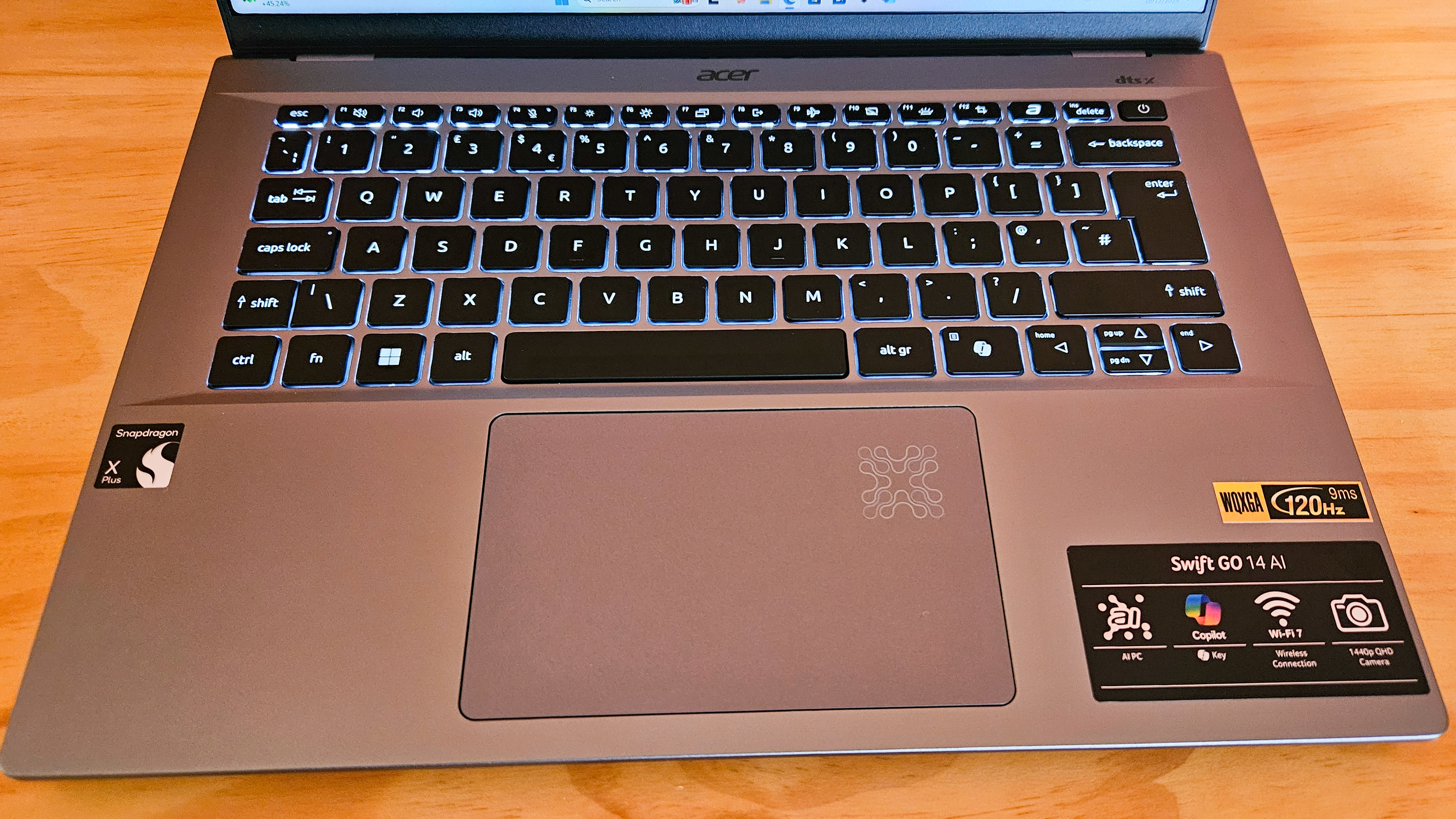
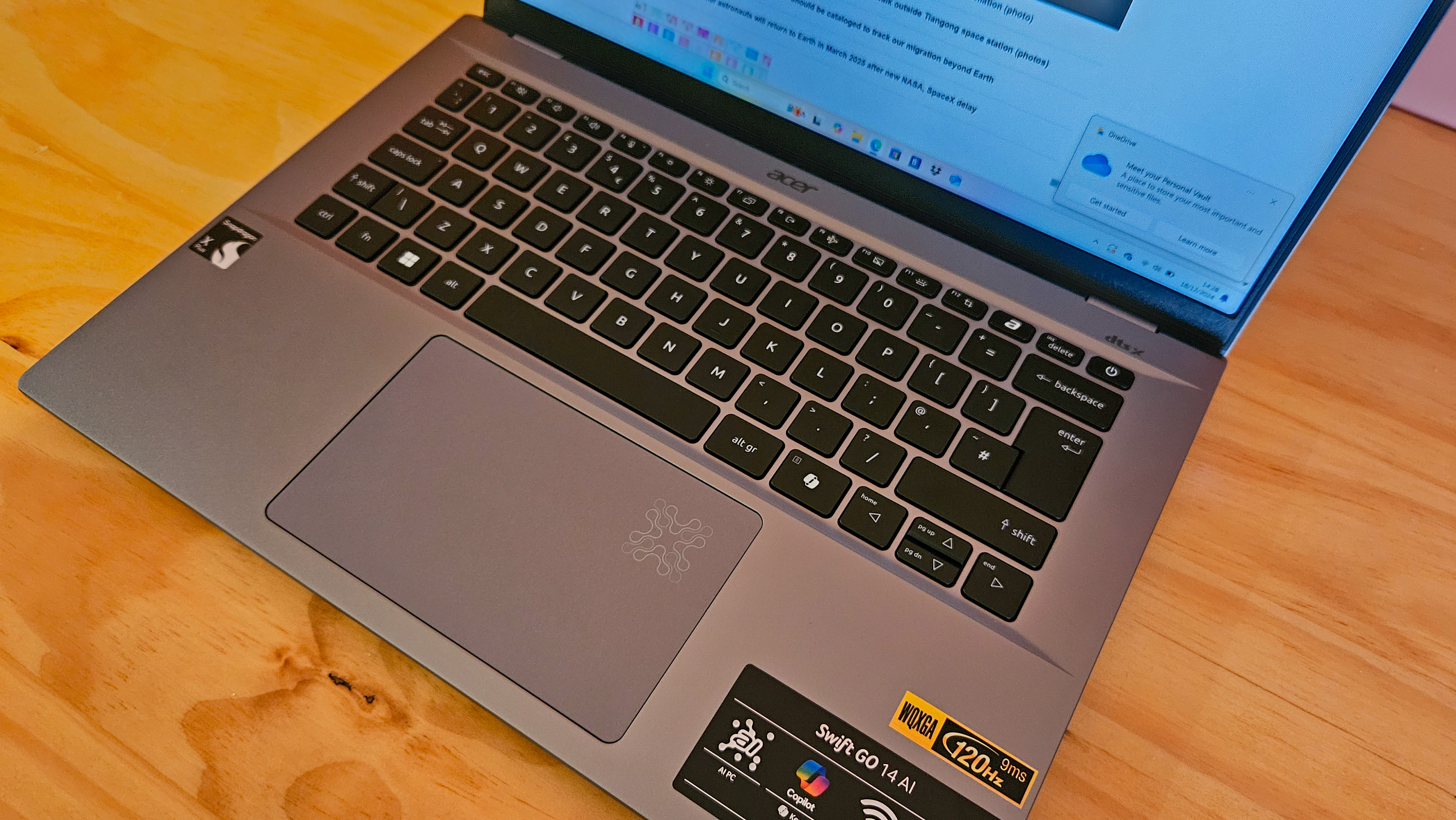
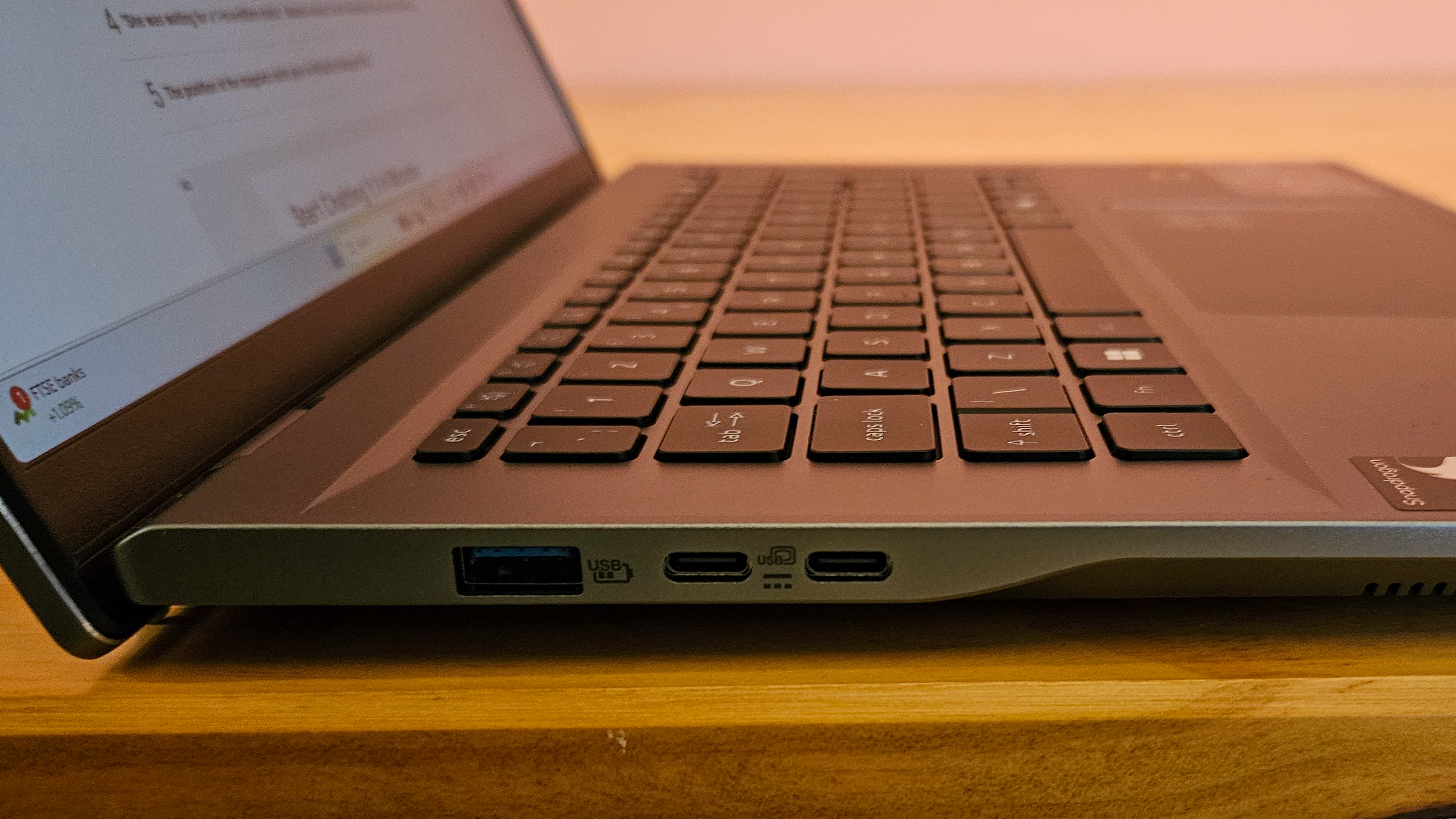
We're immediately struck by the larger size and bulkier shape of the Acer Swift Go 14 AI; you may be forgiven for thinking the use of "Go" in the branding suggests it's a machine that's suitable for use on the move. Broadly, it is.
The 14.5-inch laptop weighs 2.91 pounds (1.32 kilograms), which is lighter than plenty of comparable machines that are in the same ballpark — including the 14-inch HP OmniBook Ultra 14, which weighs 3.46 lbs (1.57 kg) and the 15-inch Microsoft Surface Laptop 7, which weighs 3.67 lbs (1.66 kg). You'd be hard-pressed to find something lighter.
Its 0.65-inch (16.6 millimeters) height is about average — so it's not especially more compact than others, but its design does make it look far bulkier than it actually is. This may be a problem, if looks are important. Similarly, its gray aluminum chassis feels uninspired, while the slightly cheaper feel of its chassis does speak to the fact it's a mid-range machine.
There are also plenty of design quirks that seem to fit the overall design well — and others that raise eyebrows. A raised notch houses the webcam, which does look odd but functionally helps you to open its lid when it's shut. The keyboard is also raised on a slight incline when you open the lid, allowing for a better angle when typing. This does, however, make the laptop again seem a little bulkier than it really is.
Acer Swift Go 14 AI: Display










For a mid-range laptop, the 14.5-inch IPS LCD display is a mixed bag — it's decent overall for most basic uses, such as typing or web browsing, with a crisp 2,560 x 1,600-pixel resolution (resulting in a good pixel-per-inch rating of 208.2). The aspect ratio of 16:10 also gives you a little more vertical screen space than is standard — useful for scrolling and working with any graphics-based tasks. But the display is, sadly, a little dim compared with other options out there, and it also seems oddly overexposed to the naked eye. We were very impressed with the 120 Hz refresh rate (double the historic standard), however, which is a feature we were surprised to see included.
Our concerns over its brightness were borne out in testing with a display calibrator, with the Acer Swift Go 14 AI registering a peak brightness of 273 nits — a below-average result. You can compare this with the Acer Aspire Vero 16, which hit 365 nits, or the Microsoft Surface Laptop 7, which reached 474 nits. This machine does, however, edge the HP OmniBook Ultra 14's 263 nits brightness.
Overall, this means the laptop is fine for use inside, but we wouldn’t recommend using it in extremely well-lit or sunny conditions outdoors. The overall quality of its colors is also decent, registering a 99.8% coverage of the sRGB spectrum, as well as scoring a Delta-E measure (which speaks to how distorted colors are, with a good result generally falling at under 3-6) of 0.1 on average and 1.64 maximum. This is excellent, considering it's a mid-range machine. A black level of 0.23 nits, meanwhile, coupled with a 1,036:1 contrast ratio is a decent result for a non-OLED panel.
Acer Swift Go 14 AI: Keyboard and touchpad










The keyboard is fairly basic — with smaller keys than you might expect in plenty of other models and spacing that does feel a little cramped. It's perfectly usable once you get used to this, but there isn't much joy in typing due to the short travel distance of each key and the lack of much haptic feedback.
The touchpad, meanwhile, is sized well and feels incredibly smooth when moving the cursor with your fingers. Clicking is also well implemented — with a subtle amount of feedback and a decent noise when you do use it. However, the presence of the distracting light-up AI design in the top-right corner does feel like a gimmick and makes things feel a little cluttered.
Acer Swift Go 14 AI: Performance and battery










The Acer Swift Go 14 AI is fitted with Qualcomm's mid-tier eight-core X Plus CPU alongside the same Adreno GPU and 45-TOPS Hexagon NPU you will find in all Arm-based laptops in the current generation. This comes alongside an entry-level 16 GB of RAM and a 1 TB SSD for storage. Overall, it's exactly what you would expect to get for a machine priced the way it is, and this was borne out by its benchmarking scores when we put it through its paces.
The machine registered an admirable 2,364 on single-threaded benchmarking with Geekbench 6, which is actually in line with the highest scores we've seen. However, the performance levels do drop when putting the laptop through its paces in complex workloads and any multitasking — with the Acer scoring 11,044. It's about in line with the first generation of Intel Core Ultra 7 processors, but doesn't hit the 13,000 to 15,000 range we'd expect from a high-end Arm-based laptop. Its graphics performance of 10,075 is also sub-par — so we wouldn't recommend using this for intensive image-based work.
What's also notable is how much noise the machine makes when you ramp up the pressure. Unlike many of the sleeker ultrabooks you're likely to encounter, the Swift Go 14 AI can often kick its fans on unprompted.
This machine's saving grace is its healthy battery life of 17 hours and 51 minutes. We've come to expect excellent battery life in light of the NPUs fitted into Qualcomm-powered laptops, and the Acer Swift Go 14 AI is no exception. While not quite reaching the dizzying heights of the Dell XPS 13 9345, which hit 27 hours and 39 minutes, it's much better than average and a great plus point if you need a machine to rely on when you're out and about.
Acer Swift Go 14 AI: Ports and features










There are two USB-C ports and two USB-A ports in the Acer Swift Go (including one that supports offline charging), alongside a 3.5 mm headphone jack. There are also two LED indicators that light up when the laptop is switched on and when it is charging. The machine does lack a few more ports that you might expect given its size, including an HDMI port and an SD card reader, which is increasingly a rarity these days. However, the wireless connectivity standards are completely up-to-date, with Wi-Fi 7 and Bluetooth 5.4 compatibility built-in.
Considering how much emphasis Acer has put into the "AI" aspect of this machine — even going so far as to creating a dedicated light-up indicator on the touchpad — there isn't an awful lot that sets the machine apart from the AI crowd. It includes the standard AI features you get with Windows 11, including video call configuration, Cocreator in Paint, Recall and, of course, Copilot. Beyond that, Acer has incorporated a handful of tools that can suppress background noise on video calls and perform some more fine-tuning to the quality of your webcam image.
Acer Swift Go 14 AI: Should I buy it?
There's plenty about this machine that represents great value for money. The display, for example, is a particular highlight thanks to a 120 Hz refresh rate and crisp resolution. We'd also note the long battery life, which is an especially key selling point. That said, there are other less satisfactory aspects, including the overall look of the Swift Go 14 AI, and the performance — which is middling, but exactly what you'd expect to pay for a laptop like this.
Overall, if you're looking for something that's a little larger than most 13- and 14-inch models for video playback or even to use while traveling, this laptop won't let you down. It's only when you begin to throw more intensive tasks at it that it may be worth considering something with a bit more firepower to its name.
If the Acer Swift Go 14 AI isn’t for you
We like the look of the Dell Inspiron 14 Plus, which features the same chipset and is available for roughly the same price. It's a little smaller in terms of its screen size, but also looks much better and has similar dimensions. The downside is that you'll only get 512 GB SSD storage, but you may see this is a worthy trade-off for something that's a little easier on the eye and is designed more intuitively.
Otherwise, it's hard to see beyond a MacBook Air — you can probably get an older model like the 13-inch M2 version for a little over $1,000 (or under during sales events) and you're still benefiting from great performance levels and an outstanding screen.

Keumars is the technology editor at Live Science. He has written for a variety of publications including ITPro, The Week Digital, ComputerActive, The Independent, The Observer, Metro and TechRadar Pro. He has worked as a technology journalist for more than five years, having previously held the role of features editor with ITPro. He is an NCTJ-qualified journalist and has a degree in biomedical sciences from Queen Mary, University of London. He's also registered as a foundational chartered manager with the Chartered Management Institute (CMI), having qualified as a Level 3 Team leader with distinction in 2023.
You must confirm your public display name before commenting
Please logout and then login again, you will then be prompted to enter your display name.
